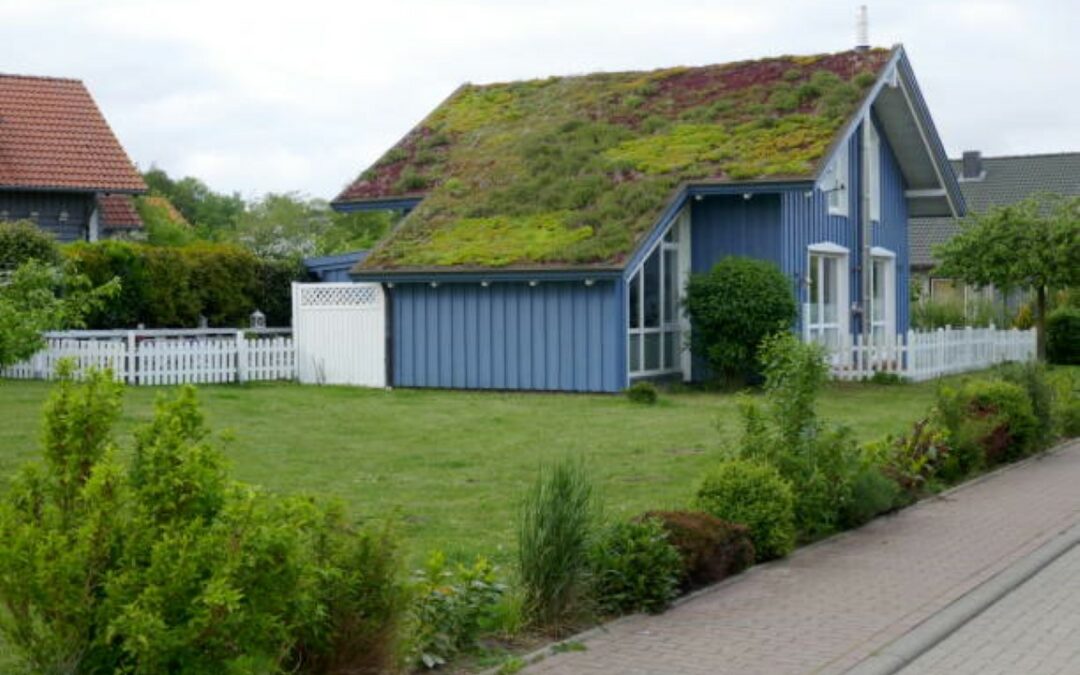Did you know that the materials used in roofing can have a significant impact on the environment?
When it comes to choosing eco-friendly roofing materials, we have 7 tips to help you make a greener choice.
From considering the environmental impact to exploring green roofing options, our tips will guide you in making an informed decision.
Join us as we delve into the world of eco-friendly roofing materials and discover how you can contribute to a more sustainable future.
Key Takeaways
- Prioritize roofing materials with minimal environmental impact.
- Opt for energy-efficient options that reflect sunlight and keep the building cooler.
- Choose materials made from recycled content or easily recyclable at the end of their lifespan.
- Regular maintenance increases the lifespan of the roofing materials.
Consider Roofing Materials’ Environmental Impact
When considering roofing materials, we should prioritize those with a minimal environmental impact. Opting for energy-efficient options can significantly reduce our carbon footprint and contribute to a more sustainable future.
Many roofing materials, such as metal and clay tiles, are known for their energy efficiency, as they reflect sunlight and keep the building cooler.
Another important factor to consider is the benefits of recycling. Choosing materials that are made from recycled content or can be easily recycled at the end of their lifespan helps to reduce waste and conserve resources.
By selecting roofing materials with a minimal environmental impact and embracing recycling, we can make a positive impact on the environment.
Now, let’s move on to the next section and assess the longevity and durability of different roofing options.
Assess Longevity and Durability
To assess the longevity and durability of different roofing options, we need to consider various factors.
One important factor is the cost-effectiveness of the materials. It’s crucial to choose a roofing material that will last for a long time without requiring frequent repairs or replacements. This will help you save money in the long run.
Additionally, it’s important to compare the aesthetic appeal of different materials. Your roof plays a significant role in the overall appearance of your home, so you want to choose a material that not only lasts but also enhances the visual appeal of your property.
Evaluate Energy Efficiency Options
Now, let’s explore our options for evaluating the energy efficiency of different roofing materials.
When it comes to choosing eco-friendly roofing materials, it’s important to consider their energy-saving technologies. Look for materials that are designed to reduce heat transfer, such as cool roofs or reflective coatings. These options can help lower your energy consumption by keeping your home cooler in the summer and reducing the need for excessive air conditioning.
Additionally, it’s worthwhile to check if there are any government incentives available for installing energy-efficient roofing materials. Some regions offer tax credits or rebates for using eco-friendly products, which can help offset the initial cost. By taking advantage of these incentives, you can save money while also reducing your environmental impact.
Now, let’s move on to the next section and explore the benefits of using recycled or upcycled materials for your roof.
Look for Recycled or Upcycled Materials
When it comes to choosing eco-friendly roofing materials, one important aspect to consider is whether they’re made from recycled or upcycled materials. These options have significant environmental benefits, as they reduce the amount of waste going to landfills and minimize the need for extracting new resources.
Recycled materials, such as metal or rubber, can be transformed into durable and sustainable roofing products. These materials not only help reduce waste but also provide a long-lasting solution for your roof. Metal roofs, for example, are known for their durability, energy efficiency, and resistance to fire and extreme weather conditions. Rubber roofs, on the other hand, are made from recycled tires and offer excellent resistance to UV rays, making them a popular choice for eco-conscious homeowners.
Upcycled materials, like reclaimed wood or slate, give a new life to materials that would otherwise be discarded. Reclaimed wood, for instance, is sourced from old barns, factories, or other structures, and can be used to create unique and aesthetically pleasing roofs. Slate, a natural stone, can be salvaged from old buildings and repurposed for roofing, providing a timeless and elegant look while reducing the demand for new slate extraction.
Environmental Benefits of Recycling
We highly recommend considering the environmental benefits of recycling by actively searching for roofing materials that are made from recycled or upcycled materials. By choosing these materials, you can contribute to reducing landfill waste and promote a more sustainable future.
Recycling roofing materials helps to conserve natural resources, as it reduces the need for extracting and processing raw materials. Additionally, using recycled or upcycled materials can also help to lower greenhouse gas emissions associated with the production of new materials.
Another advantage of recycling is that it diverts waste from landfills, which helps to alleviate the strain on these facilities and prolong their lifespan.
Sustainability of Upcycled Materials
Choosing eco-friendly roofing materials involves considering the sustainability of upcycled materials, specifically looking for options made from recycled or upcycled materials. Upcycling is the process of transforming waste materials into new products of better quality or value. It offers numerous environmental benefits, such as reducing waste and conserving resources.
However, when it comes to upcycled roofing materials, there are some economic viability challenges to consider. While the use of upcycled materials can be cost-effective in the long run, the initial investment may be higher compared to traditional roofing materials. Additionally, finding suitable upcycled materials that meet the required quality and durability standards can also be challenging.
It’s important to thoroughly research and consult with professionals to ensure that the upcycled materials chosen for your roof aren’t only sustainable but also economically viable.
Choose Locally Sourced Roofing Materials
To ensure a more sustainable choice, it’s important to opt for roofing materials that are sourced locally. By choosing locally sourced roofing materials, you can enjoy several benefits while also reducing your carbon footprint.
One of the main advantages of using locally sourced materials is that it supports the local economy. When you buy materials from local suppliers, you contribute to the growth and development of your community. Additionally, sourcing materials locally reduces transportation distances, which in turn reduces greenhouse gas emissions associated with long-distance shipping.
Another benefit is that locally sourced materials tend to be of higher quality. Since they’re produced nearby, they’re often made with better craftsmanship and are more durable. This means that your roof will last longer, reducing the need for frequent replacements and further reducing waste.
Explore Green Roofing Options
When considering eco-friendly roofing materials, it’s important to explore the various options available, including green roofing alternatives.
Green roofs offer numerous benefits for both the environment and homeowners. They can help reduce stormwater runoff, improve air quality, and provide insulation, reducing energy costs. Green roofs also create a habitat for birds, butterflies, and other wildlife, promoting biodiversity in urban areas.
However, it’s essential to consider the cost implications of installing and maintaining a green roof. While the initial installation may be more expensive than traditional roofing materials, the long-term benefits can outweigh the costs. Additionally, some cities offer incentives or grants to offset the expenses.
It’s crucial to assess your budget and consult with professionals to determine if a green roof is a feasible option for your home.
Research Maintenance and Disposal Methods
We researched maintenance and disposal methods for eco-friendly roofing materials.
Proper maintenance is essential to ensure the longevity and performance of these materials. Regular inspections should be conducted to identify and address any issues such as leaks, cracks, or damage caused by weather conditions. It’s important to follow the manufacturer’s guidelines for cleaning and maintenance to avoid potential damage.
Additionally, proper disposal methods should be followed when replacing or disposing of eco-friendly roofing materials. Many of these materials can be recycled, reducing waste and environmental impact. Researching local recycling facilities and contacting them for guidance on proper disposal practices is recommended.
Conclusion
In conclusion, when selecting eco-friendly roofing materials, it’s crucial to consider their environmental impact, longevity, and energy efficiency.
Look for options made from recycled or upcycled materials and sourced locally. Consider exploring green roofing options and researching maintenance and disposal methods.
Remember, a well-chosen roof not only protects your home but also contributes to a sustainable future. As the saying goes, ‘A green roof is a breath of fresh air for our planet.’

